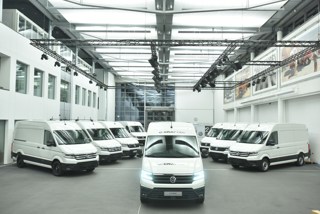Review
Tightening emissions requirements and the nearing of widespread low emission zones in major cities have meant interest in electric vans is growing.
Fortunately for fleet operators, so is the number of models available, with Volkswagen’s e-Crafter becoming the latest to join the sector.
With a gross vehicle weight of 3.5-to-4.25 tonnes and payloads of between 970kg and 1.72 tonnes, it will offer greater load capacity than the small electric vans already on the market, such as the Nissan e-NV200 and Peugeot Partner Electric, which puts it squarely up against the forthcoming Renault Master ZE and Mercedes-Benz eSprinter models.
The front-wheel drive high-roof e-Crafter goes on sale in Germany this month, priced at around €69,500 (£62,300), but is not due to be available in the UK in right-hand drive form until 2020.
However, Volkswagen said, dependent on demand, it may be able to bring some left-hand drive models into the UK next year.
While this gives a rival a head start in the sector – the Master ZE is due in the UK later this year – the e-Crafter has strengths in many in other areas.
One of these is that it is based on the Crafter, which has won numerous industry honours since it was launched last year, including being named best large panel van at the 2017 Commercial Fleet Awards.
It also uses proven and established electric vehicle technology.
Its 35.8kWh battery and 136PS electric motor (290Nm of torque) are shared with Volkswagen’s e-Golf electric car and have undergone further testing to ensure they can cope with the extra demands of being used in a commercial vehicle.
The power train gives it an NEDC driving range of 107 miles, compared with the Master ZE’s 124.
Volkswagen says this will translate into a real-world range of around 80 miles, which its research found makes e-Crafter most suited to organisations active in urban areas, such as for ‘last-mile’ deliveries by the courier and logistics sector, craftsmen, retailers and energy suppliers.
The e-Crafter’s battery can be charged from empty to 80% in 45 minutes at a 40kW (DC) rapid charge point (limited numbers in the UK), with a full charge taking around 20 minutes more. It will take five hours 20 minutes to charge from a 7kW (AC) fast charge wallbox.
As the battery pack is integrated into the van’s underbody, there is no compromise on cargo width (1,380mm), height (1,861mm) or load volume (10.7 cu m) comparable to a rear-wheel drive Crafter.
There are few exterior visual clues that the e-Crafter differs from a high-spec Crafter, although standard equipment includes LED headlights, and the same is true for the well-built cabin.
The most noticeable difference is that the rev-counter is replaced by a dial showing the battery power used through driving and charge gained through regenerative braking.
It still starts by the turn of an ignition key despite its high-tech powertrain, and its one-speed gearbox – which will be appreciated by the drivers who favour automatic gearboxes over manuals, particularly in stop-start driving – delivers the power smoothly and instantly.
The biggest difference between the electric and diesel model is refinement, as the typical clatter of a diesel engine is not there, leading to a near-silent experience.
The ride, visibility and manoeuvrability are as impressive as they are in the standard Crafter.
Although UK specs have not been finalised, standard equipment on the model tested included ParkPilot parking assistant that includes side protection (16 ultrasonic sensors distributed around the vehicle), a multifunction front camera and reversing camera and automatic air conditioning.



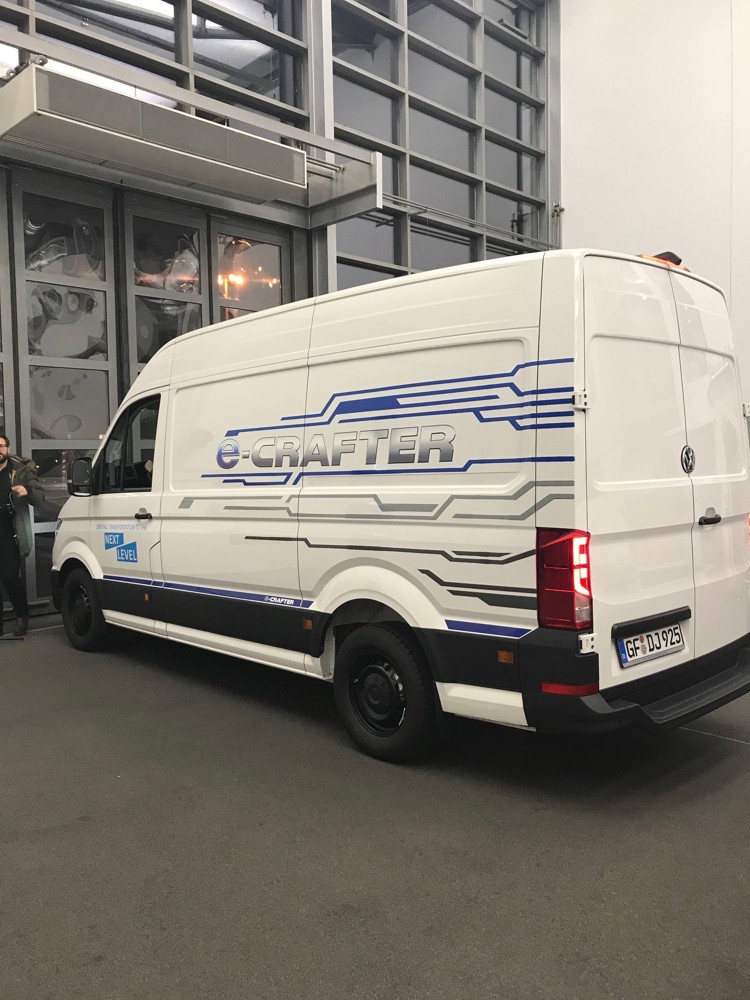

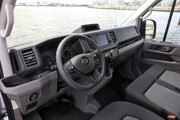
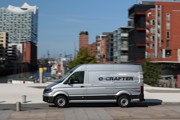



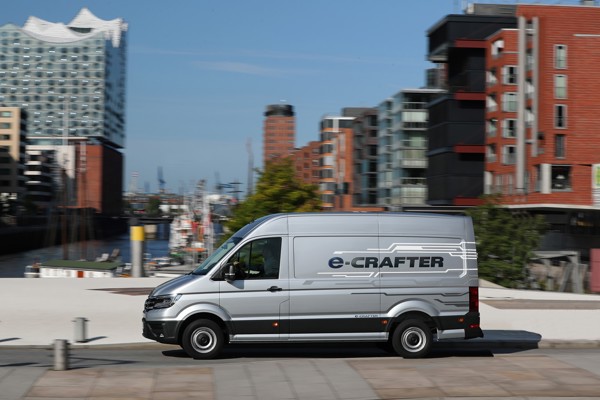
 Diesel
Diesel














